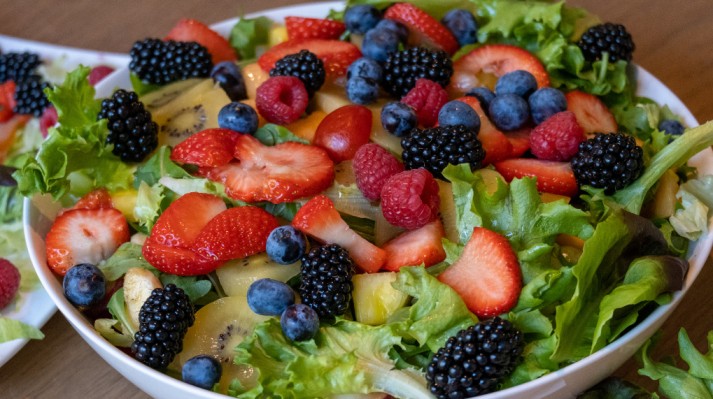Introducing solids—that is, perhaps, the most challenging phase in child care. It can be both exciting and nerve-wracking at the same time. When your little one is just beyond 6 months, you will begin worrying about what food you should feed your baby first. The primary goal that every mother has is to complement the milk with food that is rich in nutrients.
Don’t worry, we have got your needs covered. Qua Nutrition, your go-to experts in personalized nutrition plans for infants, will help you confidently start your baby’s journey to healthy eating. We will also discuss and answer your queries on safety, food tips, and everything related to the first solid food of your child.
When and Why to Start Solids at 6 Months?
There are some specific signs that your baby will show when it is ready for solid foods. Understanding them can help you go about the journey with ease.
Signs Your Baby Is Ready
There are several subtle signs that your baby is ready for solid food. Some of the tell-tale signs would include
- Sitting up with minimal support?
- Reaching out for your food?
- Losing that “tongue-thrust” reflex (where they push food out)?
If you answered those questions with “yes”, congrats! Your baby is ready for solid foods.
Why Start Solids at 6 Months?
Starting solids at 6 months comes with several benefits.
- It supports balanced growth
- It improves motor development
- It can introduce them to flavors and textures and make them less picky in later life.
Best First Foods for Babies After 6 Months
Well, that should include the food that caters to different physiological and other needs of the body. It is always important to focus on the overall development.
Iron-Rich Foods
At this stage of life, iron is the most essential element to be included in the food to prevent anemia-like symptoms.
You can consider the following options:
- Mashed moong dal or lentils
- Pureed chicken or fish (well-cooked and boneless)
- Iron-fortified baby cereals
- Spinach puree
Tip – Pair up iron-rich foods with Vitamin C. It can be helpful for better absorption.
Fruits And Vegetables
You can start with the puree of fruits and vegetables so that they can get different flavours introduced. However, never mix different fruits and vegetables. Always start with a single-ingredient puree.
Some good examples can include
- Fruits: banana, apple, pear, papaya
- Veggies: carrot, pumpkin, sweet potato, peas
Tip – Make it simple. Steam, mash, and blend the ingredients. No need to add salt, sugar, or spices.
Whole Grains And Cereals
Start with the smooth and easy-to-digest grains.
A few good options can include
- Rice cereal or soft mashed rice
- Ragi (finger millet) porridge
- Oats or suji (semolina) porridge
Tip – Begin with the smoother food first and then move over to thicker and mashed foods.
Sample Meal Plan for a 6–8 Month Old Baby
Plan the meals so that your baby gets enough food and essential elements naturally. You can work with a pediatric nutritionist to plan the right meal for your baby. We at Qua Nutrition help parents build the right diet plan based on the needs of the baby.
A standard meal plan can include
| Time | Meal Example |
| Morning | Breast milk/formula + mashed banana |
| Mid-morning | Steamed carrot or sweet potato puree |
| Lunch | Ragi porridge + moong dal mash |
| Evening | Pear or apple puree |
| Night | Breast milk/formula |
However, you can customize it after talking to your nutritionist and considering the availability of ingredients in your region.
Tip – Never attempt to force anything down the throat. Follow the hunger cues that your baby may have.
Foods to Avoid
Just like the food you should feed your 6-month-old baby, there are a few food items that are a strict NO-GO. These are the foods that you must avoid for the safety of your baby.
At the 6th month stage, we recommend skipping the following food items:
- Cow’s milk (as a drink—wait till the child is at least one year old)
- Honey (It has the risk of botulism)
- Salt, sugar, and spicy foods
- Whole nuts, grapes, popcorn (choking hazard)
- Unpasteurized dairy items
Tip – For every food that you give your baby, make sure to cut or mash it properly to avoid choking
Common Questions Parents Ask
For new mommies, every stage with the newborn is new and unknown. There will be hundreds of questions in your head when thinking about what to feed your baby after the 6th month, which is normal. It will be ideal to consult a paediatric nutritionist to get a customized diet plan for your baby. Here are some of the common questions that arise when thinking of foods for infants after 6 months.
Can I Give Water to My Baby After 6 Months?
Yes, but make sure to give only a few sips along with food. Use boiled and then cooled water.
How Many Solid Meals a Day?
We recommend one or two solid meals spread throughout the day. More than that can cause indigestion.
What Texture is Safe?
Start with smooth purees, move to mashed, and by 8–9 months, introduce soft finger foods like cooked veggies or banana pieces.
Introducing New Foods — Allergy Awareness
Not every baby is the same. It is essential to pay attention to any allergy symptoms. If you want to rule out the foods that can cause allergic reactions, we recommend introducing one new food at a time. After each introduction, check for any symptoms of allergy.
Some signs of allergic reactions can include
- Rashes
- Vomiting
- Diarrhea
- Wheezing
Ideally, there are a few food items that have been known to cause allergic reactions—eggs, peanuts, dairy, wheat, and soy. Have a discussion with your pediatrician and nutritionist for kids about these foods and how you can introduce them.
Homemade vs. Store-Bought Baby Food
Homemade baby food is always the most preferred, as opposed to baby food brought from stores.
The homemade food offers the following advantages:
- You have complete control over the ingredients used in the food.
- No sugar, salt, or spices
- Fresh, nutrient, and completely cost-effective
If you have to use store-bought food, make sure to check for the following factors:
- Use only those foods that have a single ingredient
- No preservatives and added colors
Store-bought food may be the ideal choice when you are traveling. However, never make it a habit at any cost.
Feeding Safety Tips
As with the food given at the age of 6 months, it is equally important to follow a few safety tips as well.
We recommend a few tips that can be helpful in the long run—
- Have complete control over mealtime
- Sit with a straight posture when feeding
- Always sterilise every utensil used for cooking and feeding
- Never force-feed. Let the baby have the right food in the right quantity.
Nutritional Milestones Beyond 6 Months
As your baby grows, you can introduce more normal foods.
Some suggestions can include
- By 8–9 months, they’ll explore lumpy textures and finger foods
- Key nutrients to focus on: iron, zinc, protein, and healthy fats
- Encourage variety—offer different colors and flavors each week
Tip – It may be advisable not to focus on filling their tummy. Instead, focus on nurturing a healthy relationship with food.
In Conclusion – Ready to Start the Solids Journey?
We hope this guide gave you the confidence to get started. Don’t forget—this is also a time of fun and bonding. So, grab a spoon, play some soft music, and make mealtime magical!
At Qua Nutrition, we understand that every baby is unique. So is their nutritional journey. Whether you’re a first-time parent or adding another little foodie to the family, our team of expert pediatric nutritionists offers customized feeding plans. We ensure that your baby gets all the nutrients they need in the right way.
Have questions or want a personalized baby nutrition plan? Qua Nutrition is here to help—contact us today!









